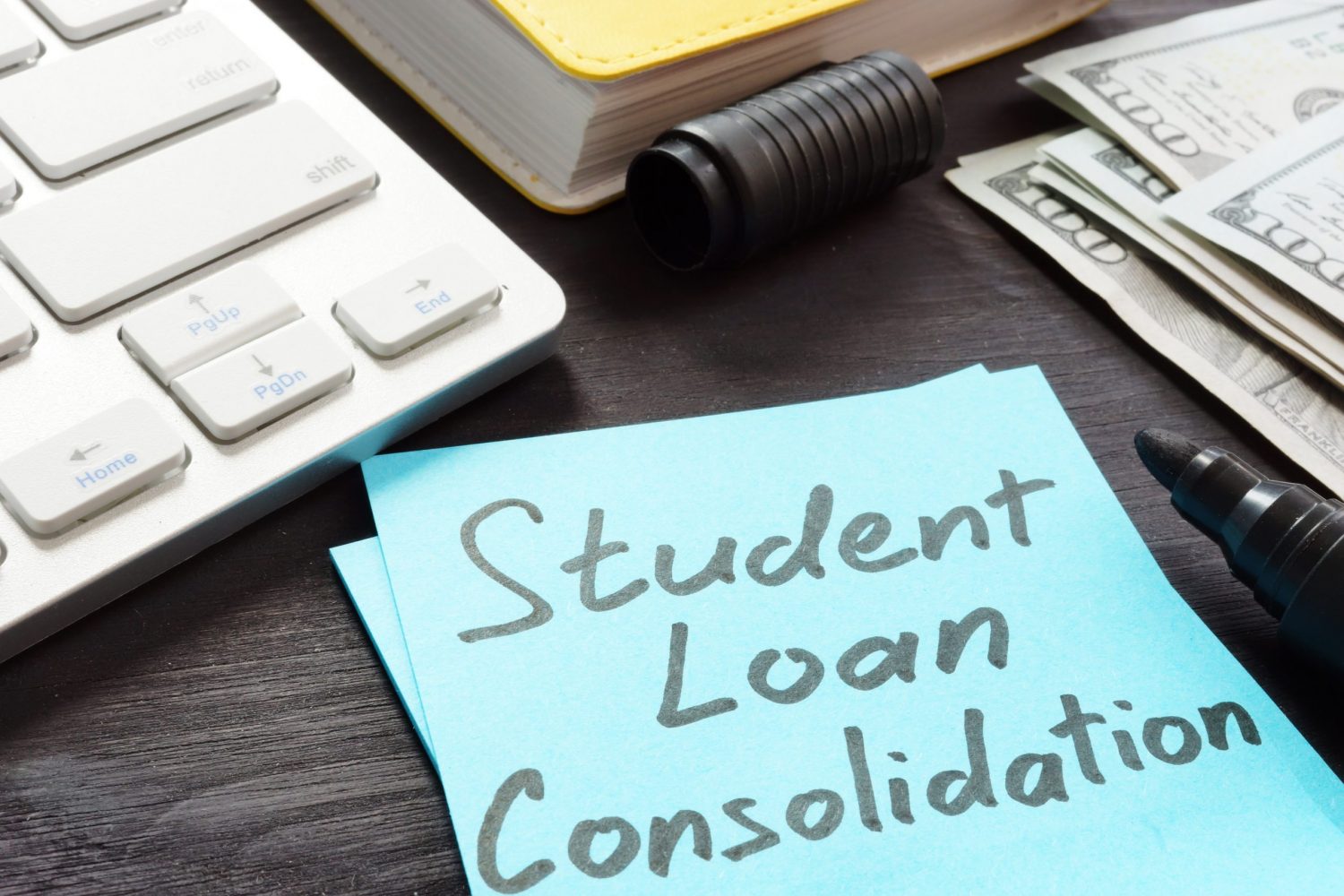Paying off student loans can appear to be a monumental challenge. Thanks to ever-rising tuition and education expenses, more and more students are leaving college with debt. The standard repayment plan gives you 10 years to repay the loan.
However, alternative options are available to those seeking to either minimize or eliminate their loan amount, repayment rate, or the length of the note. At CollegeFinance, we can provide you with the tools and information needed to make the right decision for your situation. Carefully consider the following and seek the advice of financial experts when determining how to proceed with paying down your loan, getting your loan forgiven, or applying for an income-driven repayment plan.
Interest Rates
All federal student loans incur interest at a fixed rate, which is set when the note is issued. The rate can vary depending on factors like the borrower’s credit score. With private student loans, borrowers can choose between variable and fixed interest rates. While variable interest rates may be lower at first, they are subject to change over time and can end up costing more in the long run. However, both fixed and variable interest rates for private student loans will depend on the lender, along with the borrower’s credit score.
Federal Student Loans
While federal student loans have a fixed interest rate, the rate does vary depending on the borrower’s college experience and if the loan is issued through the direct PLUS loan program. As of this article, current interest rates for new student loans are:
- Direct subsidized and unsubsidized (undergraduate): 4.53%
- Direct unsubsidized (graduate): 6.08%
- Direct PLUS: 7.08%
Additionally, there is a loan origination fee that is handled upon disbursement of the loan. All Direct loans, apart from Direct PLUS, have an origination fee of 1.059%. Direct PLUS Loans have an origination fee of 4.236%.
Beyond the rate, knowing when the interest will be compounded and when payments are required are essential components in determining the total cost of the loan. Direct subsidized loans require payment starting six months after graduation, with interest being covered by the government while the student is in school and during the initial grace period.
Direct Unsubsidized and Direct PLUS Loans incur interest charges immediately after being issued. Direct Unsubsidized Loans have the same repayment stipulations as their subsidized counterpart. However, Direct PLUS Loans require payment while the student is still in school.
It is recommended that you do everything possible to limit the amount of loans you acquire while in school, strive to repay them while in college, and make extra payments after graduation to limit the interest you will have to pay.
Is a Good Credit Score Required?
Having a good credit score is not a requirement when qualifying for a subsidized or unsubsidized federal student loan. However, the student cannot be in default on any loans (whether federal or private) and should not have drug-related offenses on their record (regardless if it is a misdemeanor or felony).
If you have gone into default, you can regain eligibility by making several on-time payments or consolidating an outstanding loan into a new loan.
Should Students Use These Loans?
There are few better options than the Federal Direct Loan Program. From repayment plans to the possibility of financial hardship forbearance, this program is designed to help students obtain the education they need without burdening them with onerous payments.
There is one thing to keep in mind, however. Students are not required to take every penny offered to them. By maintaining employment, strict budgeting, and foresight, it can be possible to minimize the loan amount needed.
Private Student Loans
Private financial institutions issue student loans. The interest rate, however, is set by a combination of credit score, market conditions, and legal limits (both federal and state).
This means there is a great deal of variability inherent to obtaining and paying off private student loans. Here are some of the largest student loan issuing banks and the interest rates they routinely offer their customers.
Fixed Interest Rates
Fixed interest rates are fixed at the time of the loan’s issuance. This can be a great advantage for borrowers right before a period of high rates but can be a problem for those borrowing during times of higher interest rates. Take a look at how interest rates are trending and turn to experienced financial experts before deciding whether to go with a fixed interest rate or variable interest rate student loan.
- Sallie Mae: 4.74%–11.85%
- Citizens Bank: 4.72%–12.19%
- PNC Bank: 4.52%–10.84%
Variable Interest Rates
Variable interest rates are adjusted regularly to match current market conditions. However, there is a ceiling and floor to the interest rate that the borrower will experience. Here are some of the variable interest rates currently offered:
- Sallie Mae: 2.75%–10.65%
- Citizens Bank: 2.72%–10.83%
- PNC Bank: 4.59%–11.59%
Importance of Good Credit
Student loans issued by private businesses do not come with the same guarantees that federal notes possess. As such, the underwriting for such notes is often more complex.
Your credit score is an integral part of the qualification process. As such, you must maintain a high credit score. You do this by paying your bills on time and using little of your revolving credit (for example, credit cards or home equity lines of credit).
Essentially, the higher your credit score, the lower your interest rate will be. However, some lenders will work with those with a poor credit score as long as they have a co-signer with a better credit score.
Avoid Private Loans as Much as Possible
At CollegeFinance, we recommend that you turn to private loans as a last resort – after exhausting all of your scholarship and federal loan options. Higher interest rates, limited repayment options (discussed in the upcoming section), and increased difficulty in qualifying make them far from ideal for the average college student.
Loan Consolidation
Student loans, whether private or federal, are not automatically consolidated at the end of a student’s collegiate experience. It is not uncommon for students to have multiple loans – all with their own interest rates and repayment schedules.
Student loan consolidation means taking these loans (with one notable exception) and consolidating them into one loan. This can be advantageous if you can get a lower interest rate or lower the monthly payment amount. However, if the new interest rate won’t be much better, and you can handle your current monthly payment without difficulty, you should refrain from consolidating your loans.
Complete Consolidation
It is possible to consolidate all of your loans, both private and federal, as long as you are comfortable going outside the safeties offered by the U.S. Department of Education. However, this option should only be taken if the total interest rate on the consolidated loan is substantially lower than the total interest rate on all of your original loans. It is also wise to consider if you wish to give up the benefits that come with federal loans – such as deferments and alternative repayment plans.
Payment plans will not be as flexible as federal repayment guidelines, and there are potentially fewer options available to students who decide to go back to college or are forced out of the workforce.
Keep in mind that you cannot consolidate private loans with federal loans under the U.S. Department of Education’s consolidation program.
Federal Loans Only
This is the most common form of loan consolidation due to the ease of access and benefits. Students who consolidate their loans are eligible to enroll in a variety of repayment programs that can either lengthen the repayment period, lower the monthly payment, or decrease the total interest rate.
The interest rate for the new note is the weighted average of the interest rates for the old notes. That is assuming you stick with the traditional 10-year repayment cycle.
We at CollegeFinance strongly recommend that you consider this option, even if you have some nonfederal loans. If handled properly, this can save a great deal of effort on your part in paying down your debt and building a strong credit history post-graduation.
Private Loans Only
The terms you will encounter will vary depending on your credit score and current ability to pay. We recommend that you evaluate any proposed consolidation carefully, taking into account the total cost of the note (this means the interest and any fees incurred when creating the consolidated note).
One thing to consider before taking the plunge is the length of your credit history. If you pay off your oldest notes by replacing them with a consolidated loan, you eliminate your potentially oldest accounts from your credit report. This may impact your credit score and is something you should discuss with a financial expert before making a decision.
Loan Forgiveness
There are a variety of loan forgiveness programs available that many people may qualify for. Here are the top three programs and what you need to do to qualify.
Military
The military has many incentives to draw in new recruits. There is one that is bound to get the attention of graduates and current students: the Loan Repayment Program (LRP). However, it is only available to those who negotiate for it on their contract, enlist in specific Military Occupational Specialties, and decline enrollment in the Montgomery GI Bill.
For those who qualify, the military will pay a third of the outstanding balance every year for three years. The two caveats are that the maximum payout is $65,000, and the payments only occur after one year and the successful completion of all initial entry training..
This means that if the borrower doesn’t pay the note throughout the year, it is possible to fall into default.
Public Service/Qualifying Employment
The Public Service Loan Forgiveness (PSLF) Program is available to graduates who work in a nonprofit or governmental role.
To qualify for total loan forgiveness, you need to maintain full-time employment in an approved position and make 120 qualifying loan payments. (This includes loan payments under income-driven repayment plans.)
Please note that this program does not work with private loans; only those made through the Federal Direct Loan Program qualify.
Income-Driven Repayment Plans With Forgiveness
Income-driven repayment plans with forgiveness, available only for Federal Direct loans, combine a 20- or 25-year payment plan with a monthly rate based on your current income. Every year, or more often if you keep the loan processor informed about your changing circumstances, the payment amount is recalculated so that you do not pay above a set percentage.
There is one thing to consider before going this route: The interest still accrues regardless of the monthly payment amount – which can potentially be lower than the monthly interest charges. This means it is possible to have your loan balance increase even if you are not expected to make a payment.
The borrower can apply for loan forgiveness after the stipulated time frame has elapsed. Any remaining principal (including compounded interest) will be written off – although the student will be required to treat the forgiven sum as income for that year’s tax return.
Paying Down Debt
Regardless of the method you choose to pay your student loans, it is vital to remember that you are not forced to pay the bare minimum. Strive always to pay a bit more every month. This will result in you paying less interest and potentially shaving months (if not years) off the life of the loan.
Which Options Do We Recommend?
Every student’s situation is unique; thus, it is impossible to give a blanket recommendation. However, we strongly advise that you consult with a financial expert before making any decisions. For the majority of students, however, we recommend using Federal Direct loans and applying for repayment under an income-driven repayment plan – with the caveat that the student pays as much above the minimum as possible.
Learn More With CollegeFinance Today
At CollegeFinance, we take the time to discover the latest in the college student financial world. From student loans to credit cards and budgeting, our team of experts is here to provide you with the information you need to make informed and proper decisions regarding your fiscal health.
Every member of our team has been where you are now – students juggling classwork with jobs and figuring out how to become adults. We bring our collective experiences to the table, helping students such as yourself figure out the important things in a friendly and insightful environment. Turn to us today to discover the why’s and how’s of financial management.

